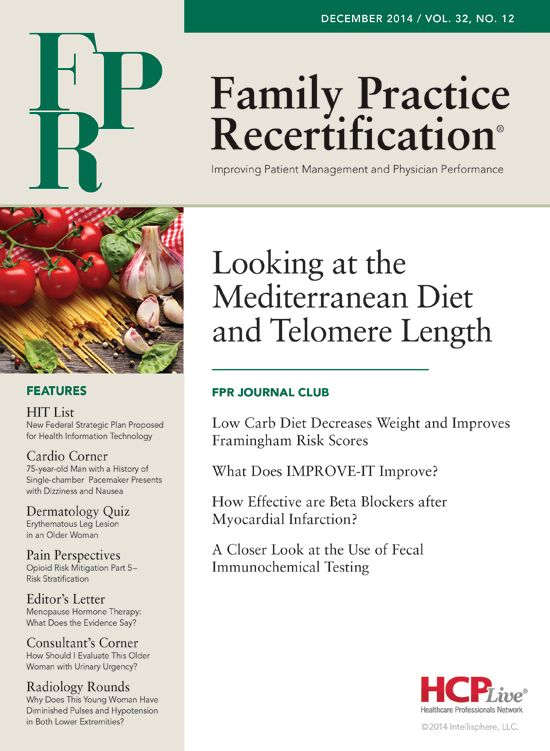A Closer Look at the Use of Fecal Immunochemical Testing
The use of fecal immunochemical testing was found to be an effective method for colorectal cancer screening; this study found it led to an 8.4% positivity rate. On subsequent colonoscopy, 40% of those with positive FIT tests had advanced adenomas or colorectal cancer.

Frank J. Domino, MD
Review
“Efficacy of Fecal Immunochemical Testing For Screening of Colorectal Cancer.” American Journal of Gastroenterology 2014; 109:1257.
Methods:
Adults aged 50-74 in the Netherlands were invited to be screened for colorectal cancer with 3 rounds of FIT testing over 6 years. This test uses a cut-off of ≥ 50ng/ml of hemoglobin in feces to reach the threshold required for referral for colonoscopy. All subjects with a positive FIT test who underwent colonoscopy were not continued in subsequent years of FIT screening.
Research & Outcomes:
Three rounds of invitations were sent to the population for screening. All screening was done on a biennial (every other year) basis. After 3 rounds, 73% of the eligible population participated in at least 1 of the 3 rounds, which is considered a well-received intervention. The positivity rate was 8.4% in the first round, 6.0% in the second, and 5.7% in the third. Statistically, all were significantly different.
On subsequent colonoscopy, the detection of advanced neoplasia declined from the first round through subsequent rounds. In Round One, 3.3% had an advanced neoplasm, in Round Two, 1.9%, and 1.3% in Round Three. The positive predictive value (percent of positive test results that were truly positive) for an advanced neoplasia was 40.7% in the first round, 33.2% in the second round, and 24% in the third round.
Conclusions:
Invitation for biennial FIT for colorectal cancer screening between age 50 and 74 was acceptable to > 70% of eligible participants. The positivity of this population was initially at 8.4% requiring further testing (i.e. colonoscopy.) The detection rates of advanced neoplasia diminished over time, demonstrating an improvement in the reduction of risk by the implementation of biennial FIT for those between 50-and-74-years-old.
Discussion:
This study supports recent studies of FIT in its ability to both identify who needs colorectal cancer screening by colonoscopy and who can remain on a biennial FIT testing schedule. Biennial screening through FIT decreases the prevalence of advanced neoplasia. This rate and method of screening improves the population’s colorectal cancer risk without the uncomfortable need for a bowel prep, and the cost and risk of a broad colonoscopy-based screening program.
Additionally, this study found a decline in the total number of advanced neoplasia seen over time. Specifically, regarding colorectal cancers the number went from 25 in the first round to 13 by the third round.
A variety of variables with regard to implementing a FIT based colorectal cancer screening strategy need to be further investigated. Is the cut-off of 50ng/ml of hemoglobin in obtained stool samples too high, or too low? Other tests, which use lower cut-offs, would result in higher advanced testing rates. Nonetheless, implementation of FIT testing is significantly less expensive, less invasive, and less risky than a screening program based upon colonoscopy.
The US Preventive Task Force gives an A recommendation to beginning screening all adults from age 50 to 75 for colorectal cancer screening using fecal cold blood testing, sigmoidoscopy, or colonoscopy in adults. This recommendation is from 2008 and is in the process of being updated.
There is strong data that supports FIT as a preferred method for the general population. The optimal frequency with which the test (yearly vs. biennially) remains to be seen. This study implies the use of FIT testing on at least on a biennial basis between ages of 50-75 is a reasonable option for colorectal cancer screening.
For patients who refuse colonoscopy for colorectal cancer screening, FIT is a very reasonable, safe and useful option, and may soon become the standard of care.
